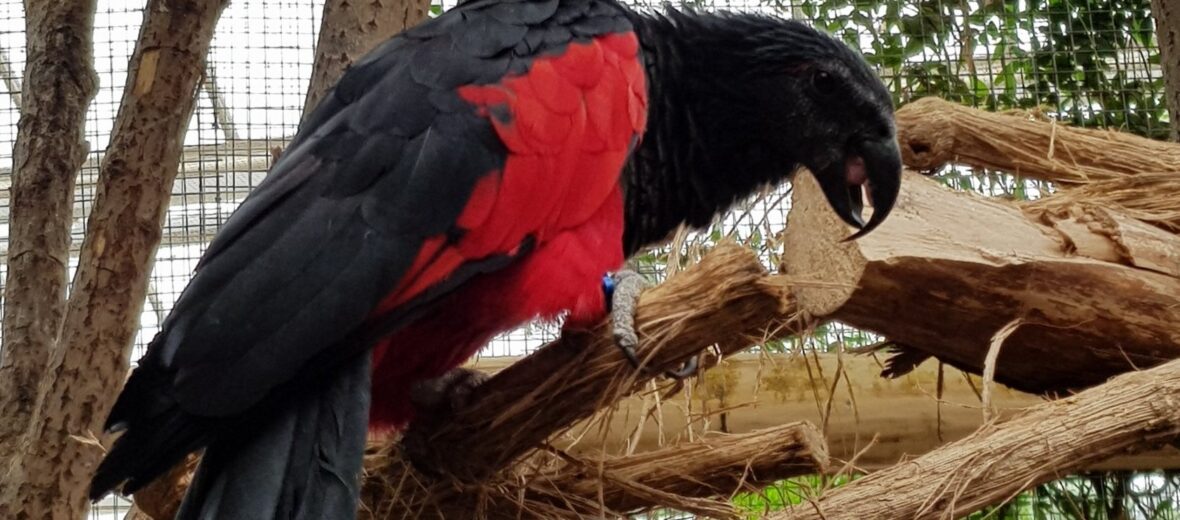
The Pesquet’s parrot, aka Dracula parrot, bare-headed Parrot, or vulturine parrot, is a unique parrot that hails from New Guinea. They prefer hill and montane rainforests. These Dracula parrots may look scary, but they’re not meat eaters, nor do they drain your blood. Their featherless face is thought to have evolved to avoid matting of feathers when eating sticky figs. With fewer than 50,000 individuals remaining in the wild to date, these beautiful and unique birds are listed as Vulnerable by the IUCN. This is due to habitat destruction and capture, for the pet trade and their feathers. This article is on special request from Daniel.
First the Stats…
Scientific name: Psittrichas fulgidus
Weight: Up to 1.9 lbs.
Length: Up to 18 inches
Wingspan: Up to 2+ feet
Lifespan: Up to 40 years
Now on to the Facts!
1.) The Pesquet’s parrot is highly migratory. Always searching for their rare and tasty figs.
2.) These gothic looking parrots feast almost exclusively on 3 known species of figs.
3.) Vulturine parrots are the only known parrot with a featherless face.
4.) They are almost always found in pairs, leading many to believe these birds are monogamous (mate for life).
5.) Unlike other parrots, Pesquet’s parrots don’t climb from branch to branch; instead, they hop.
But wait, there’s more on the Pesquet’s parrot!
6.) The harsh, raspy, and growling calls sound like thick cloth being torn.
7.) Females lay up to 2 eggs in tree hollows.
Did you know…?
This bird is the only member of its genus and this genus is the only member of its subfamily – Psittrichadinae.
8.) Their wings and feathers are highly prized by natives and the chicks are prized for the pet trade.
Now a Short Pesquet’s Parrot Video!
Also, check out the Critter Science YouTube channel. Videos added frequently!
Want to suggest a critter for me to write about? Let me know here.



